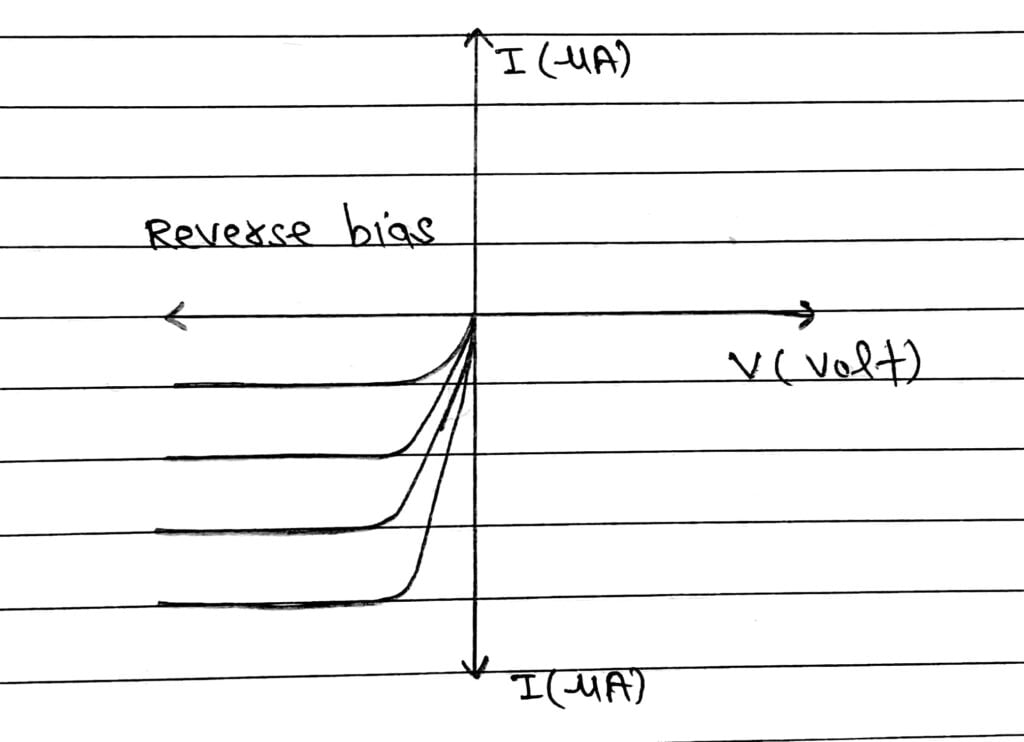A photodiode is a special type of junction diode used for convert light energy into electrical energy or detecting optical signals.
It is a reverse biased PN junction made from a photosensitive materials. In photodiode, current careers are generated by photons through photo excitation.
Its symbol is-

Construction
Photo diode fabricated with a transparent cover to allow light to fall on the diode and operated under reverse bias.

Working
When photodiode is illuminated with light (Photon), with energy greater than the energy gap of the semiconductor, than electrons holes pair are generated due to the absorption of photons. These charge carriers contribute to the reverse current.
V-I Characteristics Of Photodiode
We observe from the figure that the current in photodiode changes with the change in light intensity (I) when reverse bias is applied.

Dark Current
When the photodiode is Reverse Biased with a voltage less than its breakdown voltage and no light is incident on its junction, the reverse current is extremely small. This current is called dark current.
Uses Of Photodiode
(I) In photodetection for optical signals.
(II) In demodulation for optical signals.
(III) In optical communication equipment.
(IV) In counting machines.
Also Read: CBSE Class 12 Physics Chapter-14 (Semiconductor and Electronic Devices) All Topics
